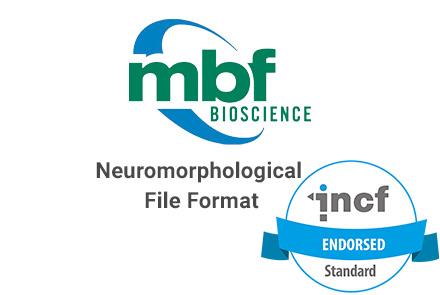
About
The neuromorphological file format is an Extensible Markup Language (XML) 1.0 (Fifth Edition) format and includes two organizational aspects, elements, and attributes. These aspects are detailed in the XML specification provided by The World Wide Web Consortium (WC3). All neuromorphological data files have a header section that includes the file’s introductory content followed by any traced data elements. Traced data elements are representations of a diverse range of neuromorphological structures found in microscopy image data.
The neuromorphological file format balances structure with flexibility by storing each modeled object as a unique data element, and providing mechanisms for grouping any number and type of data elements. File-level metadata is retained to provide detail on the origin of the sample, ensuring that the provenance of derivative data is tracked and that important source information is not separated from the corresponding data.
The decision to implement each neuromorphological structure, from spines to varicosities, was influenced by top neuroscientists who sought to maintain a meaningful model and have the necessary analysis options for that entity. The file specification has evolved with academia and discovery, and will continue to be updated as needed to define added or modified data elements.
The file metadata includes the application name, application version, application Research Resource Identifier (RRID), and institution RRID. The institution RRID specifies the company, organization, or institution that produced the software which generated the neuromorphological file.
Links
MBF File Format DocumentationSupporting software
Tools
- NMF Schema (github)
- NEURON Simulation Environment
- The NIH SPARC project
- NeuroMorpho.Org
- Human Brain Project’s EBRAINS Knowledge Graph
- Blue Brain Project’s Data Portal
Additional url
- Use this standard if you want:
- Provide a common data format for creating accurate and quantifiable digital reconstruction models derived from microscopic anatomies
- Abide by Findable, Accessible, Interoperable, and Reusable (FAIR) data standards by incorporating subject metadata and unique identifiers for anatomical terminology via the SciCrunch Interlex Terminology Portal
- Detailed morphometric analyses of neurons, vessels, cell bodies, spines, synapses, puncta, and more
- Simulations and electrotonic modeling of the neurons
- Extend outreach to tool developers through a fully documented, publicly available file specification

